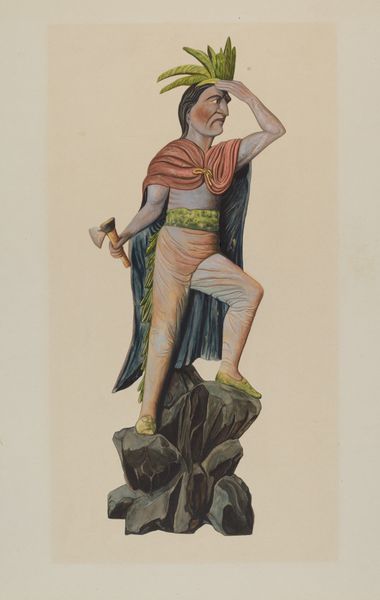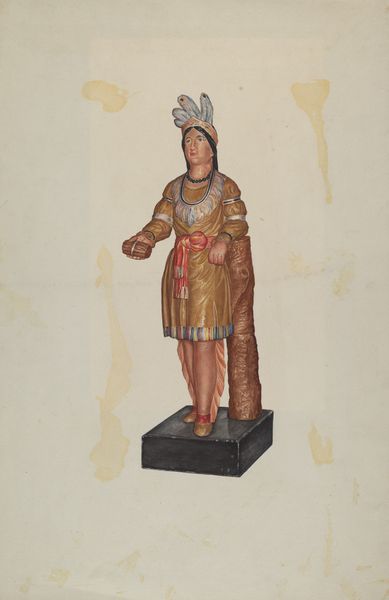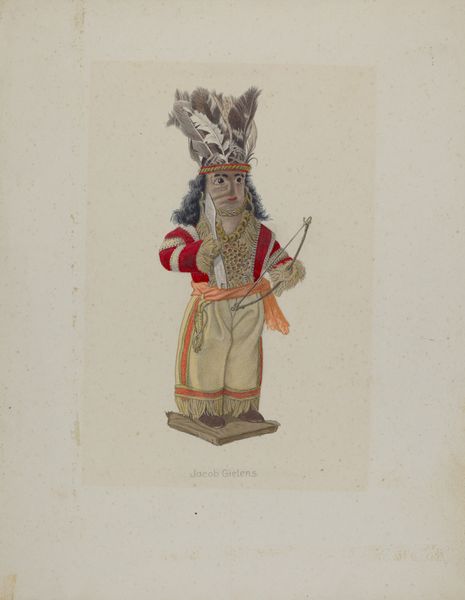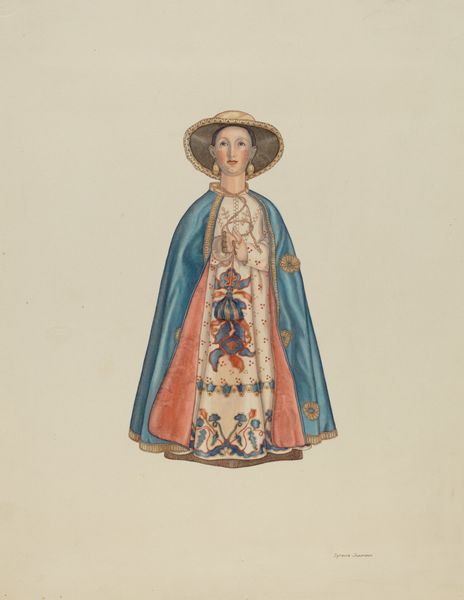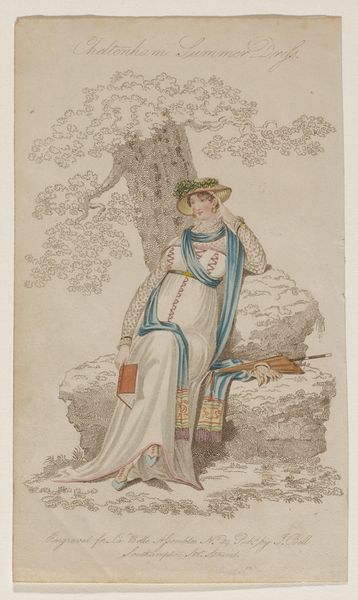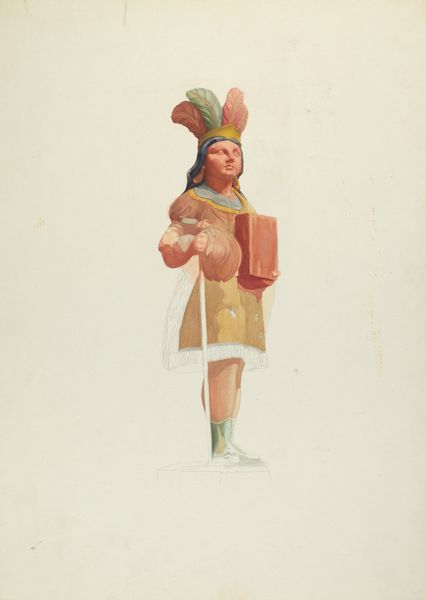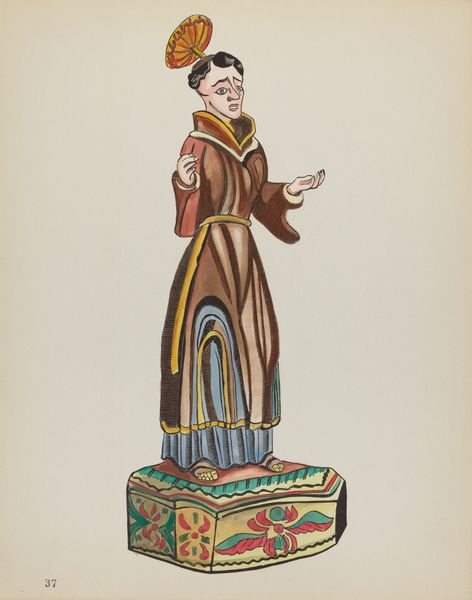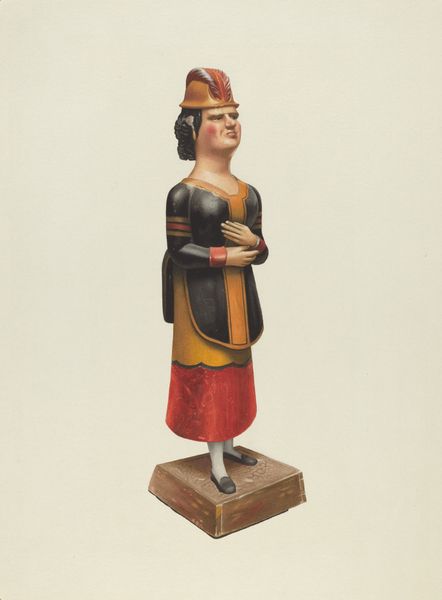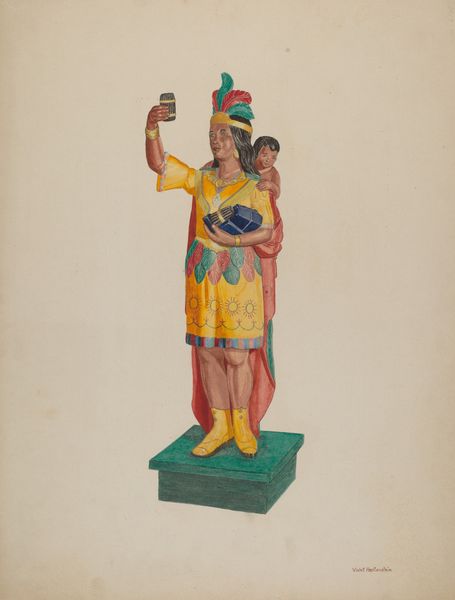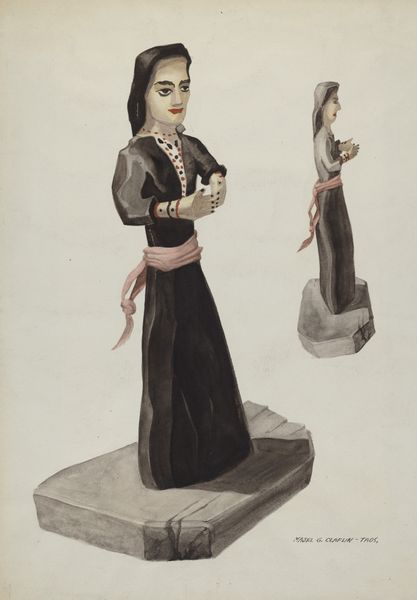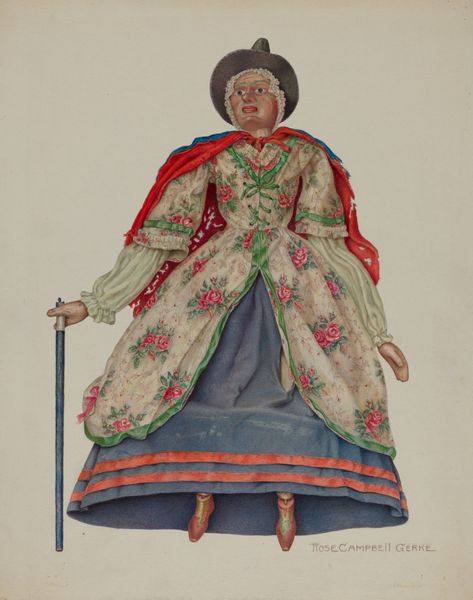
drawing, paper, watercolor
#
portrait
#
drawing
#
figuration
#
paper
#
watercolor
#
folk-art
#
watercolour illustration
#
watercolor
Dimensions: overall: 38.3 x 28 cm (15 1/16 x 11 in.) Original IAD Object: 10" high
Copyright: National Gallery of Art: CC0 1.0
Editor: This is Lucille Chabot’s “Figure of a Girl,” made in 1940 using watercolor on paper. It feels almost like a figurine, carefully painted with distinctive geometric elements across the dress. What do you see in this piece? Curator: The interplay of color and form immediately strikes me. Consider the carefully delineated planes: the ochre jacket contrasting with the muted tones of the dress, the calculated application of pigment to create a sense of depth within a two-dimensional space. What is the effect of these oppositions of color? Editor: It makes her stand out, gives her an almost sculptural presence despite being a flat image. Is it intended to mimic folk art? Curator: Precisely. The application of watercolor in this "Figure of a Girl," demonstrates an attention to materiality, specifically Chabot’s technique in using the paper as more than mere support. The figure is rendered with meticulous detail. The medium’s capacity to produce a flattened, decorative effect becomes her goal. How might this resonate with wider artistic practices? Editor: You're suggesting the method and execution underscore the cultural artifact being replicated… Curator: Indeed! We might consider it in relation to contemporaneous explorations of primitive forms or what others call "folk-art." Look how the brushstrokes almost seem deliberately unsophisticated. Do you feel the use of watercolors contributes to a particular effect? Editor: Definitely. There’s a lightness and delicate quality which adds to its folksy aesthetic, a sense of humbleness. I see the painting is not just an artwork but an exercise in artistic interpretation using formal components of design. Curator: An excellent summary, one that underscores Chabot's masterful use of media to inform the presentation.
Comments
No comments
Be the first to comment and join the conversation on the ultimate creative platform.

